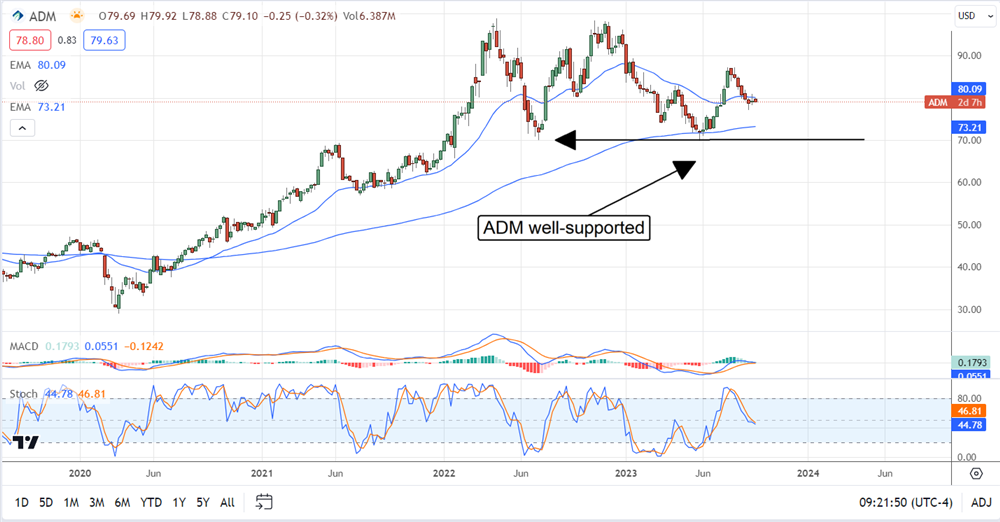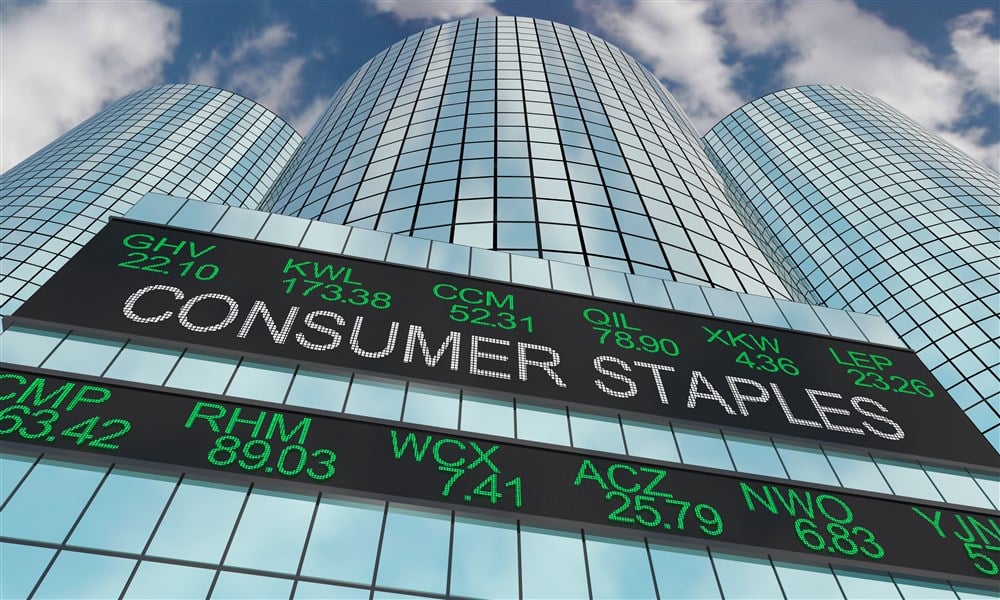
Consumer staples (NYSEARCA: XLP) stocks are down 6.5% from their July highs and more than 10% from the 2022 peaks and may move lower. The caveat is that the sector is trading near the bottom of a range, above critical support, and there are signs of bullish activity in the market. This suggests a buying opportunity, but which are the best to buy? The stocks on this list turned up on a screen using Marketbeat's Stock Screener and include the most undervalued, highest-yielding consumer staples names with double-digit upside potential.
The takeaway is that these stocks may be too cheap to ignore. With the Fed nearing the peak of the rate-hiking cycle, the market-beating yields and outlook for distribution growth and capital appreciation provide an opportunity that will outpace the bond trade and the broad equity market over the next decade.
Altria - A Cash Flow Machine and Dividend King
Altria (NYSE: MO) isn't an easy stock for every investor to hold, but let's face it: the company makes money and returns capital to shareholders, and it is unlikely to go out of business soon. Regarding its investment status, the stock trades at less than half the broad market average, about 8.5X its earnings outlook, and pays more than 9% in yield, with shares down more than 20% from the 2022 highs.
Takeaways from the last earnings report include a widening margin and better-than-expected earnings despite a downtick in volume. Guidance was reaffirmed for EPS to grow by low single digits in 2023; analysts expect the bottom line growth to accelerate to the mid-single digits next year. Altria pays about 75% of its earnings, which is high but offset by the EPS growth outlook. The question is if the company can shift to cannabis successfully. Efforts to date have met with losses, but that is due primarily to the state of federal legalization.
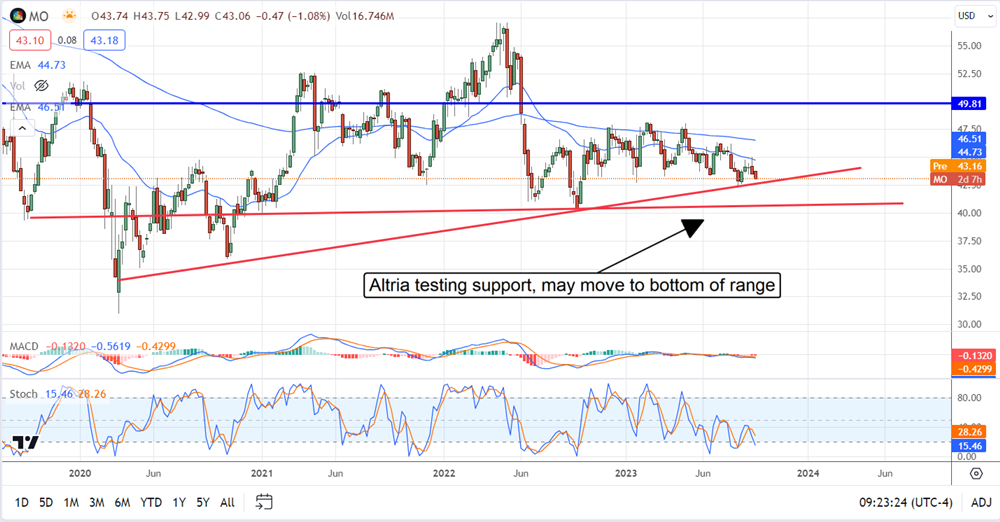
Medifast - Slimmed Down to an Attractive Valuation
Medifast (NYSE: MED) produces weight loss and healthy-living food products and has shed much of its valuation. The stock is down 75% from its highs, offering another deep-value high-yield opportunity. Declining revenue is a primary cause of the share price decline, but the takeaway is that the company generates revenue, makes profits, and pays a healthy dividend. Trading at 9.5X earnings, it pays over 8% in yield, and the payout is $6.60 annually or about 49% of earnings, which is low enough to allow distribution increases. The company has increased the distribution for seven years and recently declared the Q3 payment in alignment with the trend. The next distribution increase is due in Q1 2024 but may not be a large one.
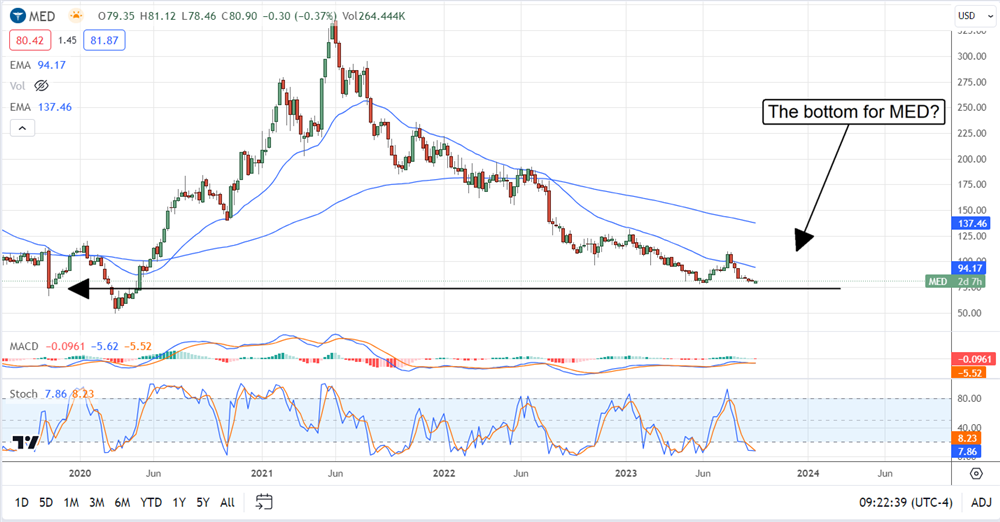
Kraft Heinz - A Big Ship to Turn Around
Shares of Kraft Heinz (NASDAQ: KHC) are trading near the bottom of their range due to tepid performance relative to turn-around expectations. The salient point is that the turnaround is still in effect, and growth is expected this year and next. The growth is centered in emerging markets, expected to outperform the S&P 500 next year and aids balance sheet and FCF improvements. The stock trades below 12X earnings, the very low end for packaged food companies, and pays more than 4.5% in yield. The payout ratio is below 55%, which suggests distribution increases are possible, but they should not be expected soon. The company may resume distribution increases in the future but is focused on growth and execution at this time.
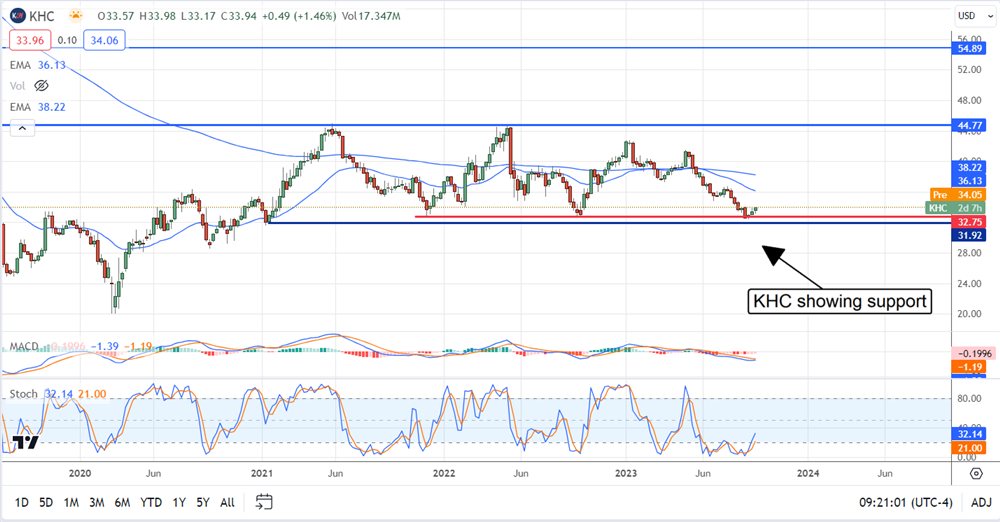
Archer-Daniels-Midland: The Infrastructure of Industrial Food
Archer-Daniels-Midland (NYSE: ADM) handles and produces food and industrial products from agricultural commodities. Among the many products are sweeteners, soybean products, peanut derivatives, flavorings, extracts, and oils. The company is a Dividend Aristocrat with nearly 30 years of consecutive increases in the dividend history. It trades at a low 11X earnings and pays over 2.25% in yield. The yield is the lowest of any stock on this list but comes with the lowest payout ratio, 28%, and the longest runway for dividend growth, making it a great choice for younger investors. As it stands, the company is raising the distribution at a pace greater than 5%, enough to outpace inflation.
